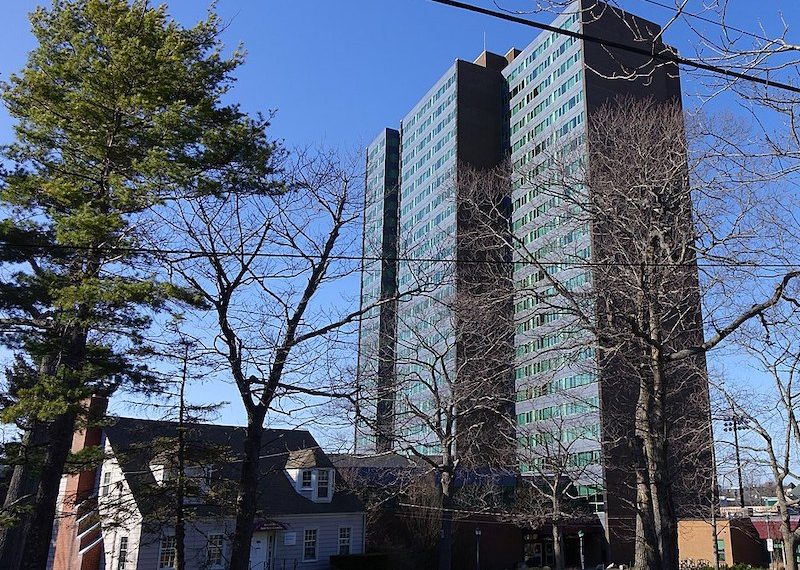
A student residence at Saint Mary’s University in Halifax, will become the tallest solar-integrated building in North America once its decades-old concrete façade is replaced with a solar wall.
By July, the C$8.5-million green retrofit under way at Loyola Residence Tower will provide nearly half the energy used in the 22-storey building, home to more than 430 students, reports CTV News. The retrofit will generate 100,000 kilowatt-hours per year for the high rise and other campus buildings and is a vital part of the university’s plan to slash emissions 53% from 2005 levels by 2025.
Last summer, Saint Mary’s (SMU) surpassed its original goal and timeline of 40% emissions reductions by 2025. Its success owed partly to moves like replacing its steam heating plant with a high-efficiency hot water plant, switching from oil to gas for heat, and using compact fluorescent and LED lighting, the university said in a 2022 progress update. Nova Scotia Power’s move to blend more renewable resources into its power mix also helped.
The solar wall retrofit on the more 50-year-old-building is earning plaudits from SMU management, students, and faculty for its energy benefits and for the message it sends to other post-secondary institutions.
“We want someone else to take [the solar wall idea] and run with it,” said Dennis Gillis, SMU’s senior director of facilities management.
Second year engineering student Selina Adema said she hopes to “see more universities and buildings in Halifax incorporate these installations.”
For astrophysics professor Rob Thacker, leading on climate solutions with projects like this retrofit is part of any university’s essential mandate as an affluent, energy-intensive institution dedicated to developing and sharing important ideas.
“When you have the resources of a big institution, you can use those resources in showing people what can be achieved when you put your minds to it,” said Thacker.